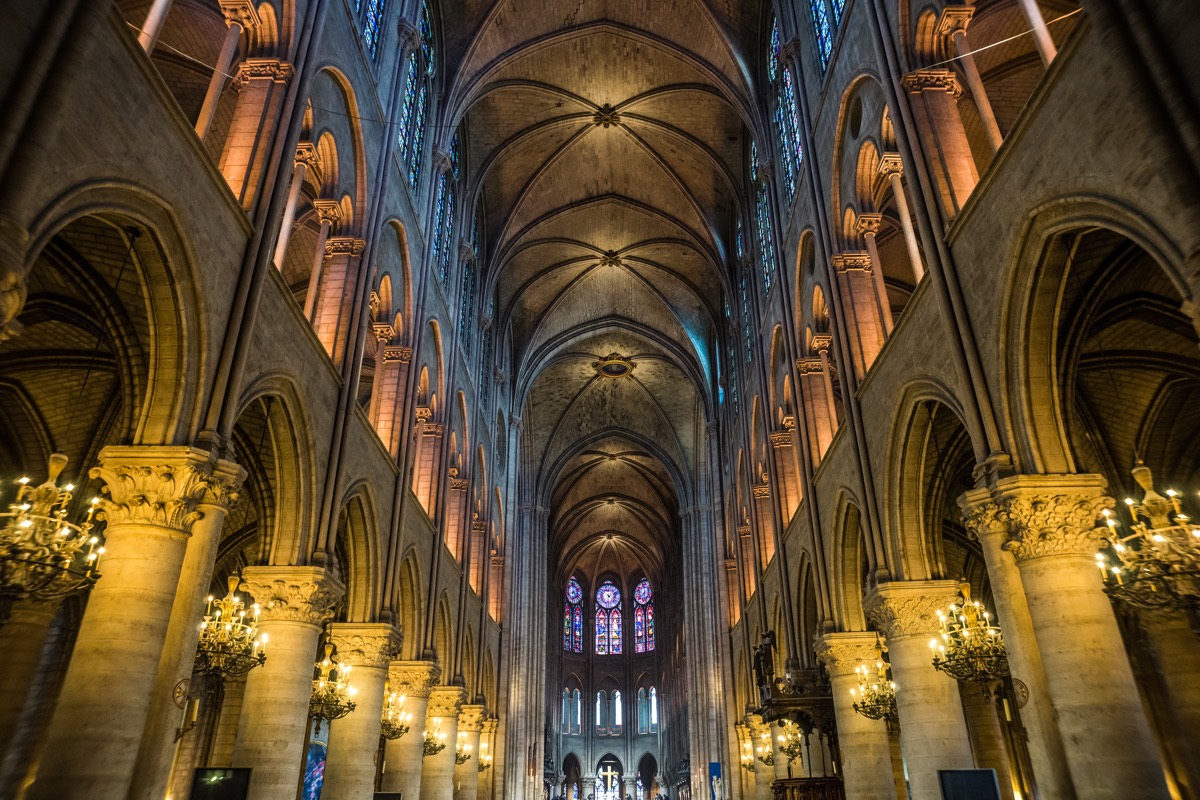Revolution, Napoleon and Now Fire: What Paris' Iconic Notre Dame Cathedral Has Endured

Paris' iconic Notre Dame cathedral caught fire today (April 15), a shocking inferno that soon collapsed part of the building's spire.
According to the BBC, the cause of the fire was not immediately known, but may have been linked to ongoing renovation work on the building. It's not yet clear how much of the famous twin-towered church that the fire will destroy, but the damage — including to the church's famous stained glass — is apparently extensive.
"The temperature in this [fire] might have reached close to 1,700 to 1,900 degrees Fahrenheit (930 to 1,037 degrees Celsius), easily," said Venkatesh Kodur, a professor of civil and environmental engineering at Michigan State University and an expert in structure fires. Glass shatters at about 1,200 F (650 C), Kodur said.
Hard history
This is not the first time that the Notre Dame cathedral has been in dire straits.
The cathedral was completed in 1345, the final result of a mind-bogglingly huge construction project that began in 1163. Notre Dame sites on the Seine river, on a spot where a previous cathedral, the Saint-Étienne, had stood for at least 400 years before. When Maurice de Sully was elected bishop of Paris in 1160, he proposed the demolition of Saint-Étienne and the reconstruction of a new cathedral dedicated to the Virgin Mary, according to the official cathedral history. It was an enormous project, involving new urban planning for the entire area. [10 Historical Treasures That the World Lost in the Past 100 Years]
No building makes it 856 years without some ups and downs. Among the low points for Notre Dame was the 17th century. According to National Geographic, the reign of Louis XIV brought dire changes to the cathedral. Original stained-glass windows were replaced with plain glass; a pillar in the main doorway was demolished to widen the opening so carriages could pass through.

The French Revolution was even more devastating. According to the cathedral’s official history, revolutionaries tore down 28 statues of kings housed in Notre Dame, driven by anti-monarchist fervor. They also destroyed many other statues with the exception of one of the Virgin Mary, and tore down the original spire of the church, erected in the 13th century. Revolutionaries renamed Notre Dame the Temple to the Goddess Reason, according to the Fondation Napoleon, and later converted it into a wine warehouse.
Sign up for the Live Science daily newsletter now
Get the world’s most fascinating discoveries delivered straight to your inbox.
After the revolution, an agreement called the Concordat of 1801 returned Notre Dame to the Catholic Church. Napoleon Bonaparte, the French general and eventual emperor, chose the damaged cathedral as the site of his 1804 coronation. Bonaparte's people draped fabrics over the Gothic architecture of Notre Dame to make it look like a Greek temple, according to Fondation Napoleon. From then on, the building was used for imperial ceremonies, but remained in disarray until the Romantic movement of the 1800s, according to the Fondation Napoleon. Victor Hugo’s famous novel "The Hunchback of Notre-Dame," published in 1831, reinvigorated interest in the crumbling building in the middle of Paris.
With city officials and public support behind him, architect Eugène-Emmanuel Viollet-le-Duc launched a major renovation project to save the cathedral in 1843. It was a 20-year project that created Notre Dame as it appeared before today's fire: The old spire was replaced, sculpted gargoyles were added and new murals were painted. According to the cathedral’s official website, the renovation also included the building of a new sacristy, where priests prepare for worship services, and the reconstruction of the cathedral’s organ. [Images: The Church of the Holy Sepulchre]
Modern-day damage
Over the next 150 years, the cathedral would see more facelifts, including the restoration of stained glass in the nave and a decade-long effort to clean the building's western facade. In recent years, the building has again shown its age. Last year, the Friends of Notre-Dame of Paris Foundation launched a major fundraising effort in the United States in an effort to fund repairs to the cathedral. According to CBS News, years of pollution and weathering had cracked the facade and the famous flying buttresses. The French government had pledged $50 million to renovations, but the Archdiocese of Paris had estimated that the total cost would reach $185 million.
Most likely, Kodur said, the masonry walls of the cathedral will stand, though they could crack and become weakened from the heat of the fire and the cold water used by firefighters to control the flames. The wooden roof is a loss, Kodur said, as are any drapes, decorations or flammable objects inside.
The much-needed renovations may be the cause of the fire that raged at the cathedral yesterday, according to French authorities. But some of the cathedral’s treasures may have been saved by those same renovations, too. On April 11, cranes lifted more than a dozen religious statues off the top of the building to be sent to southwestern France for restoration work, according to the Associated Press. The statues made it down just four days before the fire burst into flame.
- 30 of the World's Most Valuable Treasures That Are Still Missing
- Photos: Ancient Basilica Found Beneath Turkey Lake
- In Photos: Gazing into a Medieval Church
Originally published on Live Science.

Stephanie Pappas is a contributing writer for Live Science, covering topics ranging from geoscience to archaeology to the human brain and behavior. She was previously a senior writer for Live Science but is now a freelancer based in Denver, Colorado, and regularly contributes to Scientific American and The Monitor, the monthly magazine of the American Psychological Association. Stephanie received a bachelor's degree in psychology from the University of South Carolina and a graduate certificate in science communication from the University of California, Santa Cruz.










